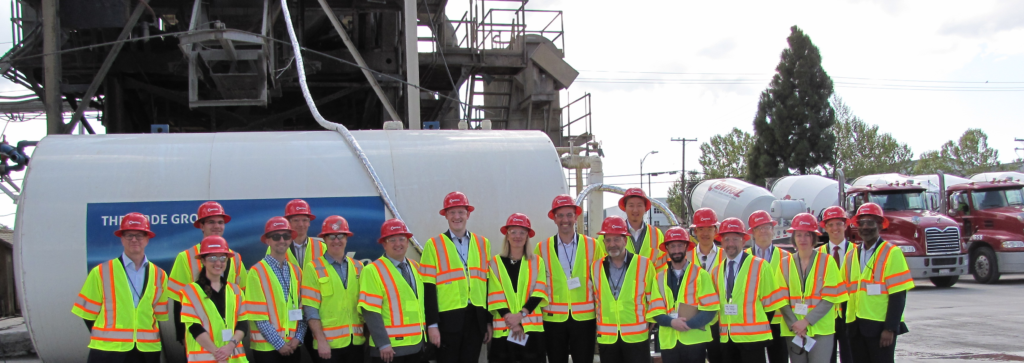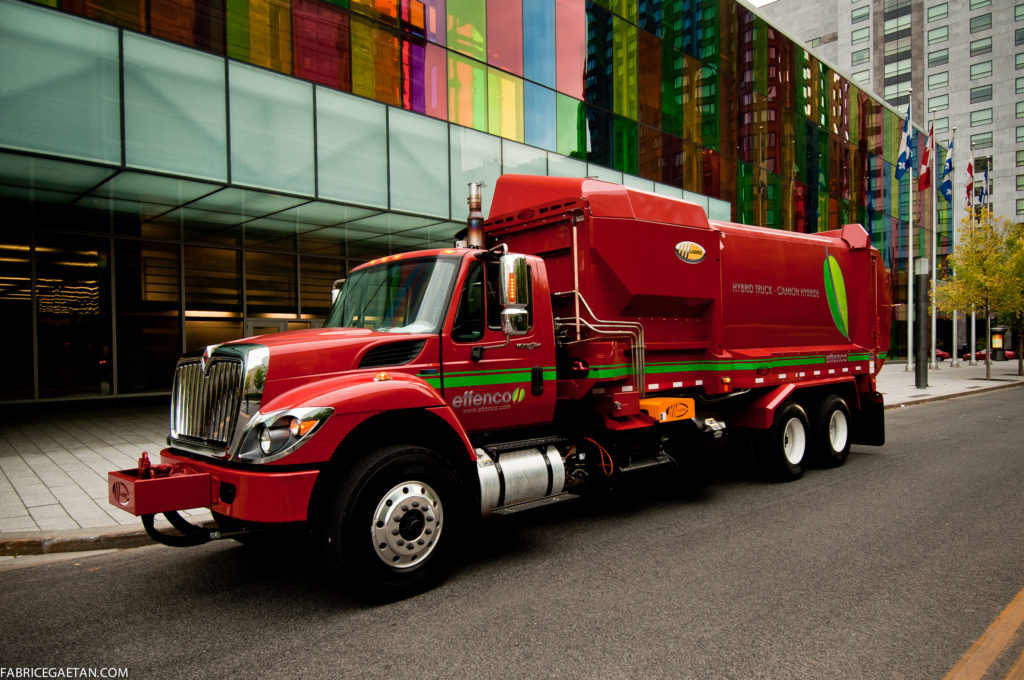Science and tech gets a reboot for Canada’s 150
Rebecca MelvilleJuly 13, 2017
This article is from the July 2017 issue of Canadian Innovation News. You can read the full issue here.
By Debbie Lawes
No doubt, many of us would have read about Drs. Frederick Banting and Charles Best’s discovery of insulin nearly a century ago.
But did you know that lamivudine, also known as 3TC, was created by McGill University virologist Dr. Mark Wainberg in collaboration with Montrealbased BioChem Pharma in 1989? Recognized as one of the safest and most effective treatments for HIV, this “blockbuster therapeutic” has saved millions of lives around the world.
Then there’s the modern day battery. Lewis Frederick Urry, a Canadian chemical engineer, created both the alkaline battery and lithium battery while working for the Science and tech gets a reboot for Canada’s 150 Eveready Battery Company in Cleveland OH, building on earlier work by Thomas Edison. Sixty years later, at least 80% of the dry-cell batteries in the world are based on Urry’s work.
“It’s remarkable to think that billions of smartphone users around the world depend on a Canadian’s innovation to power their device,” says Fernand Proulx, interim president and CEO / chief operating officer of Ingenium – Canada’s Museums of Science and Innovation. The three musuems are: Canada Science and Technology Museum, Canada Agriculture and Food Museum and Canada Aviation and Space Museum.
“Incidentally, the digital camera technology in your smartphone was co-invented by another Canadian, Willard Boyle, for which he won the Nobel Prize in Physics.”
Of course, technological innovation on this vast and rugged continent didn’t begin with European explorers or Canadian confederation 150 years ago (thus the plus symbol for Canada 150+). Indigenous people have been developing better ways to travel and live here for thousands of years. In just one example, many of those first explorers from Europe may never have survived had the Indigenous people not taught them to use boiled cedar needles to treat scurvy.
Yet, in characteristically Canadian fashion, we are reluctant to brag about our accomplishments. This despite the fact that three of our cities—Toronto, Montreal, and Vancouver—are ranked among the top 25 most innovative cities in the world, according to the 10th annual “Innovation Cities Index”.
Canada’s 150+ celebrations are providing new opportunities to break with that quiet and modest persona. Ingenium is one of the main groups leading this charge.
 Canadian innovation today: The Canada Museum of Science and Technology’s traveling exhibit, Climate Change is Here, showcases Canadian research in the field of climate change and technologies being developed to help mitigate it. One such technology developed by CarbonCure Technologies, Dartmouth, Nova Scotia, allows for concrete producers to permanently store CO2 in concrete as solid limestone. This reduces the carbon footprint, creating affordable, greener and stronger concrete products. In April, Environment Minister Catherine McKenna (centre) joined a tour of Central Concrete in San Jose, CA, where CarbonCure’s technology is installed. (Photo: CarbonCure Technologies)
Canadian innovation today: The Canada Museum of Science and Technology’s traveling exhibit, Climate Change is Here, showcases Canadian research in the field of climate change and technologies being developed to help mitigate it. One such technology developed by CarbonCure Technologies, Dartmouth, Nova Scotia, allows for concrete producers to permanently store CO2 in concrete as solid limestone. This reduces the carbon footprint, creating affordable, greener and stronger concrete products. In April, Environment Minister Catherine McKenna (centre) joined a tour of Central Concrete in San Jose, CA, where CarbonCure’s technology is installed. (Photo: CarbonCure Technologies)
“I don’t think we, as Canadians, toot our own horn enough,” says Christina Tessier, director general of the Canada Science and Technology Museum. “Here at the museum we are ready to step up and let people know all the amazing things Canada and Canadians have done and share those stories. It’s time for us to take our credit where it’s due.”
Much of that horn blowing will be on display at the “rebooted” Canada Science and Technology Museum, which celebrates its 50th birthday on November 16. The Ottawa facility is putting the final touches on an $80.5-million renovation that includes more than 7,400 m2 of new exhibition space, enough to double the amount of artifacts on display. A new $156-million, 36,000 m2 high-tech Collections Conservation Centre next door will mean more and improved artifact storage and laboratory space.
True to its name, new technologies will play a pivotal role in the new design, even before you enter the renewed Canada Science and Technology Museum. A giant LED screen on the building’s façade will project stories of Canadian S&T. Once inside, visitors can tour Artifact Alley, a main street of sorts that showcases close to 800 artifacts from the collection and includes an augmented reality experience that brings some of the artifacts to life.
The revamped building will also see the installation of 11 new exhibitions that will tell Canadian stories of ingenuity. Among them is Technology in our Lives, an exploration of how Canadian lives are shaped by daily interactions with technology.
Indigenous innovators
One notable change will be the increased focus on Indigenous innovations, which are traditionally displayed in other museums as cultural or historical artifacts.
“The Indigenous community has been at the forefront of technological change and has been a strong influence in the lives of Canadians,” says Proulx. “We didn’t believe in isolating these innovations in an Indigenous zone. Instead, we’ve weaved the importance of the Indigenous technology innovations throughout the galleries.” One exhibition, called Hidden Worlds, looks at astronomy from an Indigenous perspective. Other artifacts illustrate how past Indigenous innovations, like snowshoes, are creating business opportunities today.
For its Into the Great Outdoors exhibition, the museum is working with the Huron-Wendat First Nation, a small community of about 2000 people near Québec City that is home to world leaders in snowshoe research, design and fabrication, including GV Snowshoes, whose snowshoes will be on display at the museum.
STEM + Art = STEAM
The new Canada Science and Technology Museum will also expand its focus on STEM (science, technology, engineering, and mathematics) to include the arts and design, with an emphasis on experiential, hands-on learning.
Says Tessier: “We went from focusing on STEM to focusing on STEAM because we believe the arts are critical in creating that cycle of innovation and multidisciplinary teams,” as well as preparing today’s youth for the jobs of tomorrow.
[caption id="attachment_11908" align="aligncenter" width="640"] Canadian innovation today: Another homegrown technology on display in the museum’s Climate Change is Here travelling exhibit was developed by Effenco Development Inc. The Montreal-based company invented the Active Stop-Start system that automatically shuts down the engine or a truck or bus when it’s stationary, and restarts on demand, saving fuel and reducing CO2 emissions. (Photo: Canada Science and Technology Museum)[/caption]
Canadian innovation today: Another homegrown technology on display in the museum’s Climate Change is Here travelling exhibit was developed by Effenco Development Inc. The Montreal-based company invented the Active Stop-Start system that automatically shuts down the engine or a truck or bus when it’s stationary, and restarts on demand, saving fuel and reducing CO2 emissions. (Photo: Canada Science and Technology Museum)[/caption]
Take the video game sector. Canada ranks third in the world for developing video games, behind the U.S. and Japan, according to the Entertainment Software Association of Canada. The Canadian sector’s 472 studios employ more than 20,000 people and contribute $3 billion annually to Canada’s GDP.
Last fall, the museum launched Game Changers. Developed in partnership with the Social Science and Humanities Research Council of Canada and Burnaby, British Columbia-based EA Vancouver, the travelling exhibit outlines how storytelling, gameplay, graphics, and audio merge to create compelling gaming experiences. The museum also collaborates with external partners to ensure its workshops and exhibits reflect the most up-to-date science.
“We’re involved with academia, government departments and industry on current research,” as well as scientists from Canada and around the world through a new demonstration stage that will have live broadcast capabilities, says Proulx. “It’s important to have scientists interact with the next generation, to feed those inquiring minds. It’s current science and inspiring future science.” Work is underway to bring even more “future science” to the museum, particularly in areas where Canada excels, such as artificial intelligence and stem cell research.
“The average Canadian doesn’t necessarily know these are Canadian strengths so we want to make sure those stories are told,” says Tessier.
Beyond bricks and mortar
One of the museum’s biggest global successes has been with gaming apps. Its newest free online game, Ace Academy: Skies of Fury, based on First World War aviation, has been downloaded more than 500,000 times in 190 countries.
“We’ve made a conscious decision to go beyond the bricks and mortar to increase awareness of Canadian innovation internationally and what great partners we can be,” says Proulx.
As part of Canada’s sesquicentennial celebrations, Ingenium is participating in other initiatives to expand the three museums’ reach beyond Ottawa and Canada:
- As of November, Ingenium’s entire collection will be available online.
- Ingenious: This new book, authored by Governor General David Johnston and National Research Council chair Tom Jenkins, features hundreds of Canadian innovations that have made the world a smarter, smaller, kinder, safer, healthier, wealthier, and happier place.
- Innovation150: Five of Canada’s leading science outreach organizations launched this national program which includes travelling science exhibitions (e.g. quantum computing), city-wide festivals, a touring MakerMobile, and a crowdsourced interactive digital storybook of Canadian innovation.

This article is from the July 2017 issue of Canadian Innovation News. You can read the full issue here.
Events For Leaders in
Science, Tech, Innovation, and Policy
Discuss and learn from those in the know at our virtual and in-person events.
See Upcoming Events
By using this website, you agree to our use of cookies. We use cookies to provide you with a great experience and to help our website run effectively in accordance with our Privacy Policy and Terms of Service.




